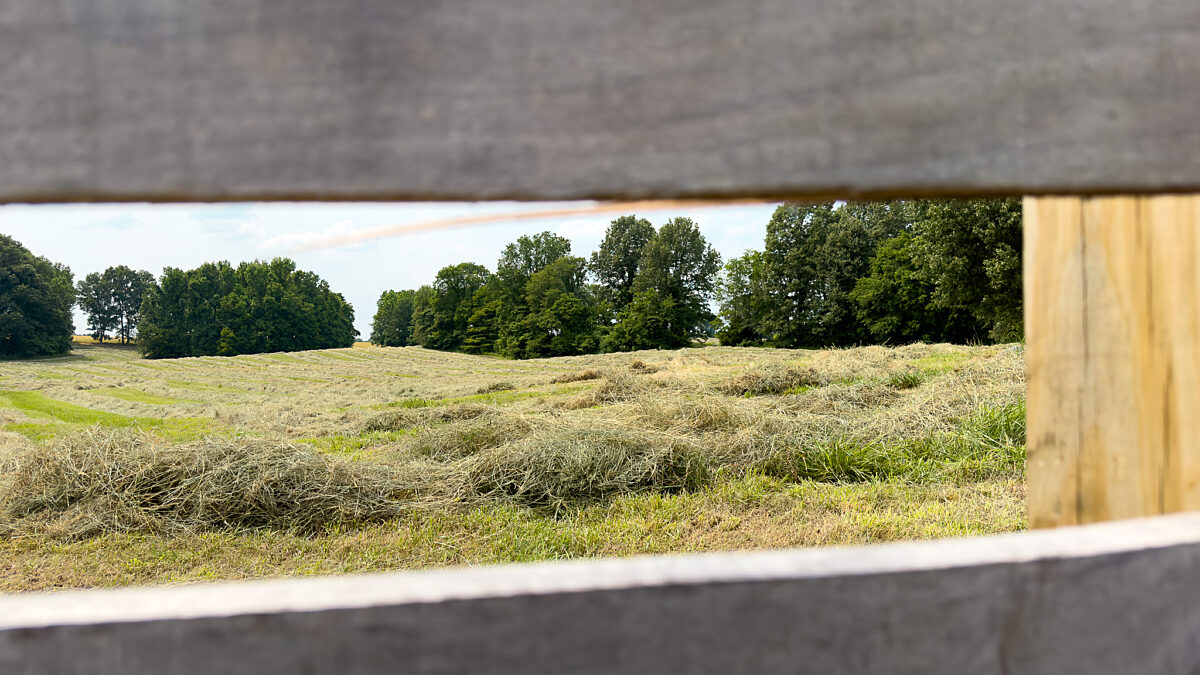Humble Alfalfa Hay Offers Ecological Benefits
Ayman M. Mostafa, Ph.D.

photo credit: AFBF Photo, Morgan Walker
Ayman M. Mostafa, Ph.D.
The Southwest United States continues to endure a “megadrought,” a term used to describe drought conditions lasting at least two decades. As a result, the question of why we grow certain crops in the desert, specifically alfalfa hay, often arises.
The share of water going toward alfalfa hay production supports the dairy and livestock industry, ultimately our local food supply chain. Still, some believe the amount of water used to irrigate alfalfa is a major contributing factor to the region’s shortage, and fail to recognize alfalfa’s economic efficiencies, environmental impacts and agronomic benefits to our ecosystem.
Alfalfa in the Southwest ecosystem provides many environmental benefits.
Besides its economic importance, alfalfa also may help reduce the impacts of climate change. Because it covers the soil for a longer time than any other crop, alfalfa is envisioned as a leading option for soil carbon sequestration, also known as “regenerative agriculture,” especially with the need to decrease carbon emissions and introduce the carbon credits initiative.
Alfalfa fields are important contributors to the biodiversity of agricultural systems.
Incorporating a perennial legume such as alfalfa can help stabilize soils nutritionally depleted by row crop or specialty crop production, as has occurred in many agricultural areas in the Western U.S. Alfalfa was introduced into crop rotation in Europe, and encouraged globally, as a measure of the Agri-Environmental Scheme to reduce the impacts of agriculture intensification on the environment.
Switching from annual forage crop production for dairy animals and livestock feed to perennial alfalfa can minimize soil disturbance and erosion. This practice can help restore depleted soils, minimize inputs and decrease the footprint of agricultural production.
While suspected of higher total applied irrigation water than many other crops, alfalfa has greater water use efficiency. Additionally, the entire above-ground portion of the plant is harvested as many as 12 times per year in the Southwestern region. When compared to other crops harvested less frequently, alfalfa’s ratio of harvestable biomass/water applied shows it is far more water efficient. Furthermore, the majority of the irrigation water used in alfalfa is recycled back into the environment.
Alfalfa is a rich habitat for wildlife allowing for a diversity of local niches and preserving many endangered species from different animal families.
Alfalfa fields are important contributors to the biodiversity of agricultural systems by functioning as insectaries for beneficial insects, many of which are pollinators or natural enemies that play important roles in the low desert agroecosystem. Beneficial insects move from alfalfa fields into other crops, where they play crucial roles in pollination and biological control. These roles reduce our reliance on synthetic insecticides.
Western alfalfa production is quite different from production in other areas where non-dormant, irrigated varieties provide year-round habitat for insects. This allows alfalfa to play an important role in insecticide resistance management by acting as a refuge, especially for aphids and whiteflies.
Alfalfa improves soil characteristics with its deep roots; as a legume, it fixes atmospheric nitrogen through bacteria in the root nodules.
Because of its nature as a perennial plant that stays in the field for three to five years, alfalfa helps trap sediments and takes up nitrate pollutants, mitigating water and air pollution.
In summary, if alfalfa fields are eliminated or significantly reduced, it is highly likely most of the original acreage will be converted to residential and commercial uses. This situation will likely decrease farmland and increase the population in those areas. As a result, the region may experience shortages of certain food products thereby relying on food from non-local sources, including those imported from abroad. This will likely increase food prices and extend the supply chain. With the increase in population comes all known environmental impacts, alteration of ecosystems, and pollution of air, water and soil, all of which impact our carbon footprint.
Ayman M. Mostafa, Ph.D., is Area Programmatic Agent & Regional Specialist Cooperative Extension & Dept. of Entomology at The University of Arizona. This column was originally published by Arizona Farm Bureau and is republished with permission.
Top Issues
VIEW ALL